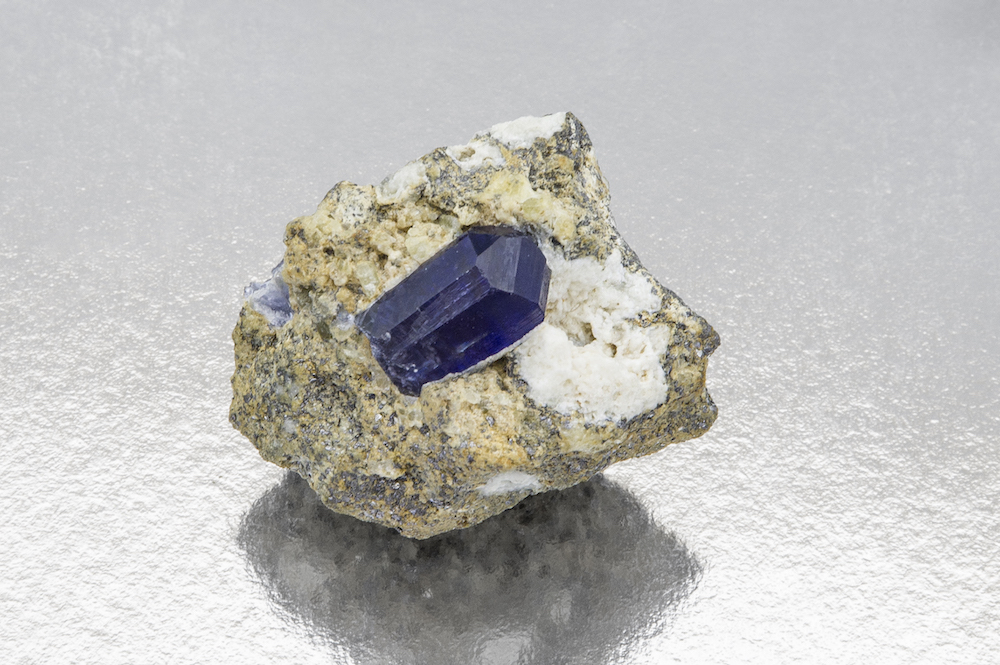 John spent eight years as a student in the geology department at M.I.T. and is quite sure he never heard a mention of transparent gemstones other than diamonds in all that time. In the late 1960s, he mined beryl east of Mount Kenya, stocking it in drums in his yard Nairobi. One day a visitor peeked into a drum, asked what was in it, and when told, exclaimed, “Goodie, lets look for aquamarine”. A half dozen years later, the visitor’s infectious enthusiasm led to John’s discovery of the John Saul Ruby Mine in Tsavo West, Kenya. John and his French wife Muriel and his Kenya-born sons Mark and Eric subsequently moved to Paris where John has spent much of his time writing books and peer-reviewed papers about origins: origins of hard transparent gemstones, origins of deep gas, origin of the pandemic of 1918, origin of cancer concurrently with the appearance of multicellular animals during the “Cambrian Explosion”, origin of High Culture in ancient Mesopotamia, and the origin of humanity’s oldest beliefs among the ancestors of the click-speaking peoples of east and southern Africa. John and his family spend much time in Africa but John and his wife recently took a workboat up the west coast of Greenland rechecking mineralogical and archaeological sites reported in pre-GPS times, and they plan to be in Estonia shortly before the Dallas Symposium this year.
John spent eight years as a student in the geology department at M.I.T. and is quite sure he never heard a mention of transparent gemstones other than diamonds in all that time. In the late 1960s, he mined beryl east of Mount Kenya, stocking it in drums in his yard Nairobi. One day a visitor peeked into a drum, asked what was in it, and when told, exclaimed, “Goodie, lets look for aquamarine”. A half dozen years later, the visitor’s infectious enthusiasm led to John’s discovery of the John Saul Ruby Mine in Tsavo West, Kenya. John and his French wife Muriel and his Kenya-born sons Mark and Eric subsequently moved to Paris where John has spent much of his time writing books and peer-reviewed papers about origins: origins of hard transparent gemstones, origins of deep gas, origin of the pandemic of 1918, origin of cancer concurrently with the appearance of multicellular animals during the “Cambrian Explosion”, origin of High Culture in ancient Mesopotamia, and the origin of humanity’s oldest beliefs among the ancestors of the click-speaking peoples of east and southern Africa. John and his family spend much time in Africa but John and his wife recently took a workboat up the west coast of Greenland rechecking mineralogical and archaeological sites reported in pre-GPS times, and they plan to be in Estonia shortly before the Dallas Symposium this year.
The tanzanite occurrence, the Umba River sapphire deposit in northeastern Tanzania, and the John Saul Ruby Mine in southeast Kenya define a circle, necessarily so, because any three geometric points define a unique circle. This 158-mile (255 km) diameter circle can be explained as the exposed portion of a 3-D impact scar formed at the same time as the lunar scars. Events can be traced from the formation of this approximately 4000 million year old feature to the origin of the gem deposits almost 3500 million years later. Other such circular scars – in the Hindu Kush, the Pamirs, and the Urals – are also associated with occurrences of hard transparent gemstones.
